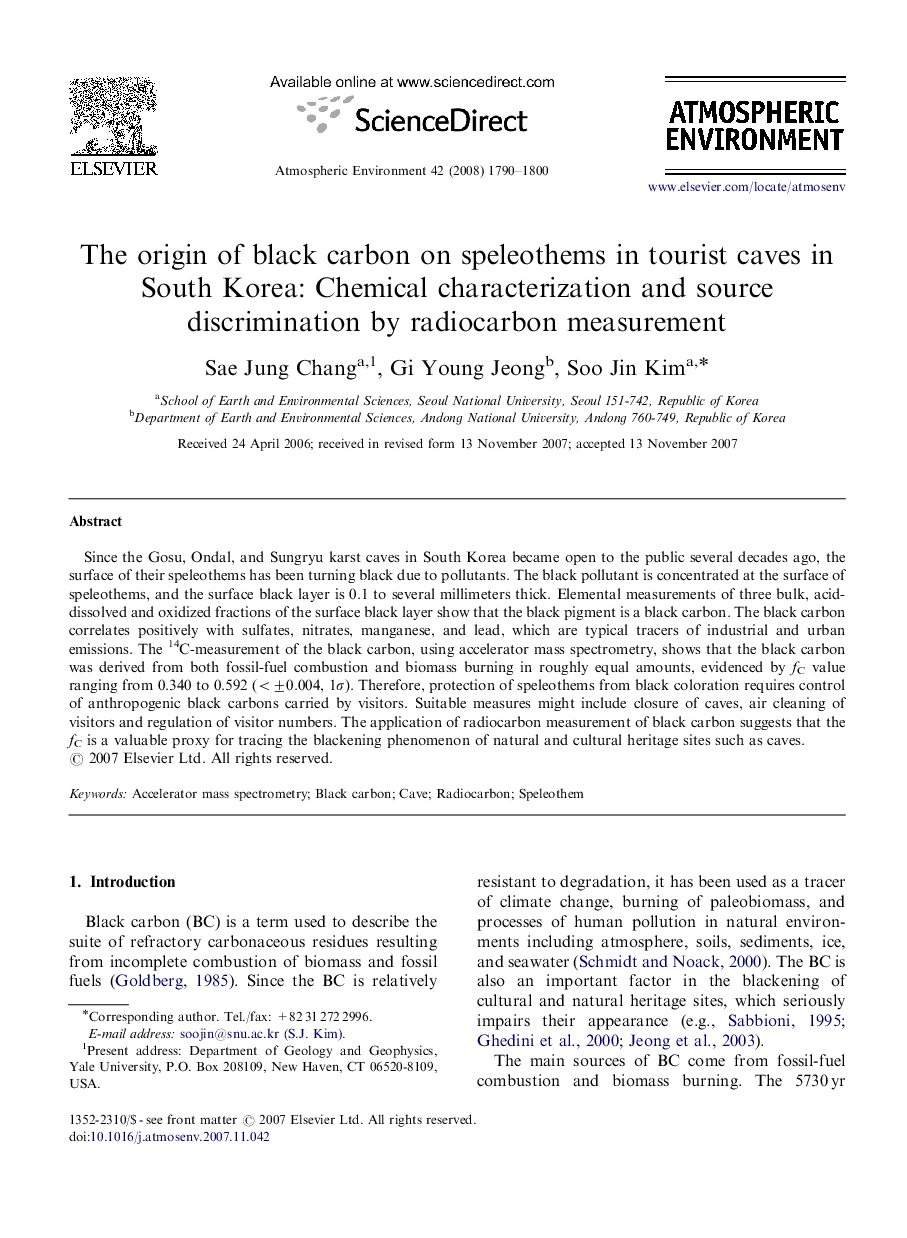| کد مقاله | کد نشریه | سال انتشار | مقاله انگلیسی | نسخه تمام متن |
|---|---|---|---|---|
| 4443052 | 1311176 | 2008 | 11 صفحه PDF | دانلود رایگان |

Since the Gosu, Ondal, and Sungryu karst caves in South Korea became open to the public several decades ago, the surface of their speleothems has been turning black due to pollutants. The black pollutant is concentrated at the surface of speleothems, and the surface black layer is 0.1 to several millimeters thick. Elemental measurements of three bulk, acid-dissolved and oxidized fractions of the surface black layer show that the black pigment is a black carbon. The black carbon correlates positively with sulfates, nitrates, manganese, and lead, which are typical tracers of industrial and urban emissions. The 14C-measurement of the black carbon, using accelerator mass spectrometry, shows that the black carbon was derived from both fossil-fuel combustion and biomass burning in roughly equal amounts, evidenced by fC value ranging from 0.340 to 0.592 (<±0.004, 1σ). Therefore, protection of speleothems from black coloration requires control of anthropogenic black carbons carried by visitors. Suitable measures might include closure of caves, air cleaning of visitors and regulation of visitor numbers. The application of radiocarbon measurement of black carbon suggests that the fC is a valuable proxy for tracing the blackening phenomenon of natural and cultural heritage sites such as caves.
Journal: Atmospheric Environment - Volume 42, Issue 8, March 2008, Pages 1790–1800